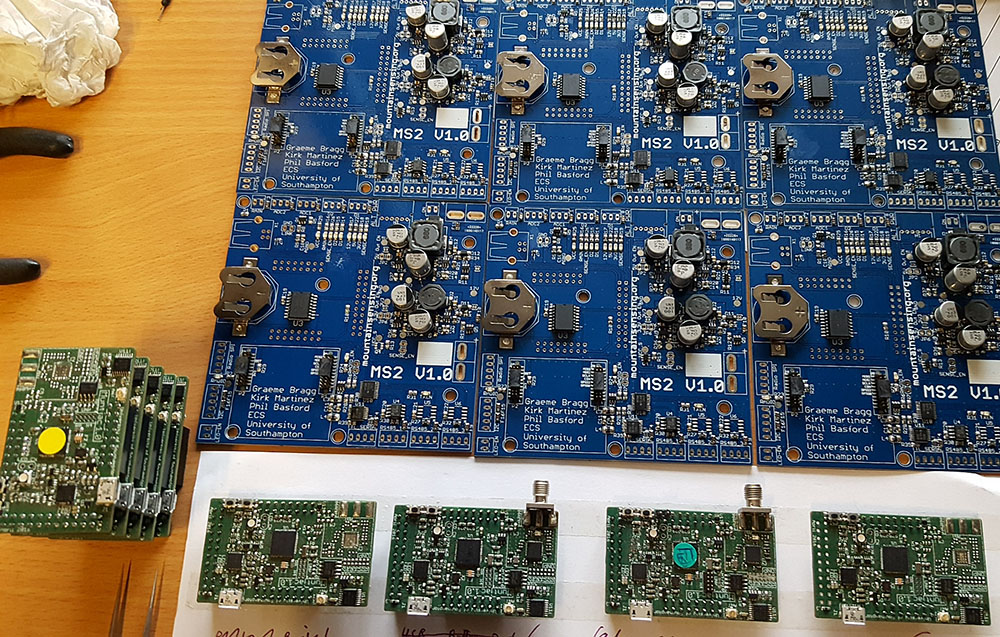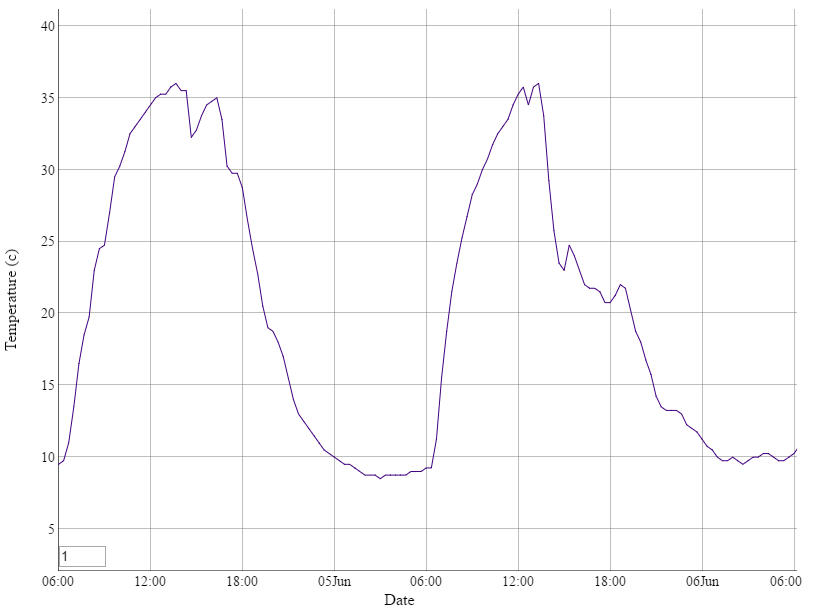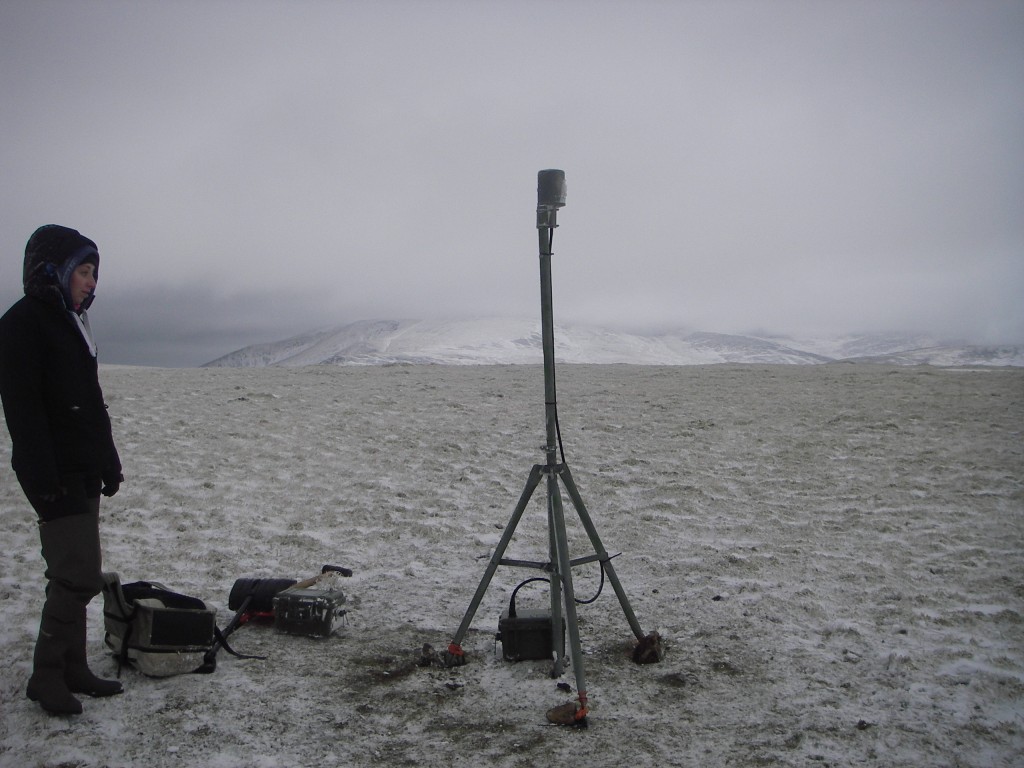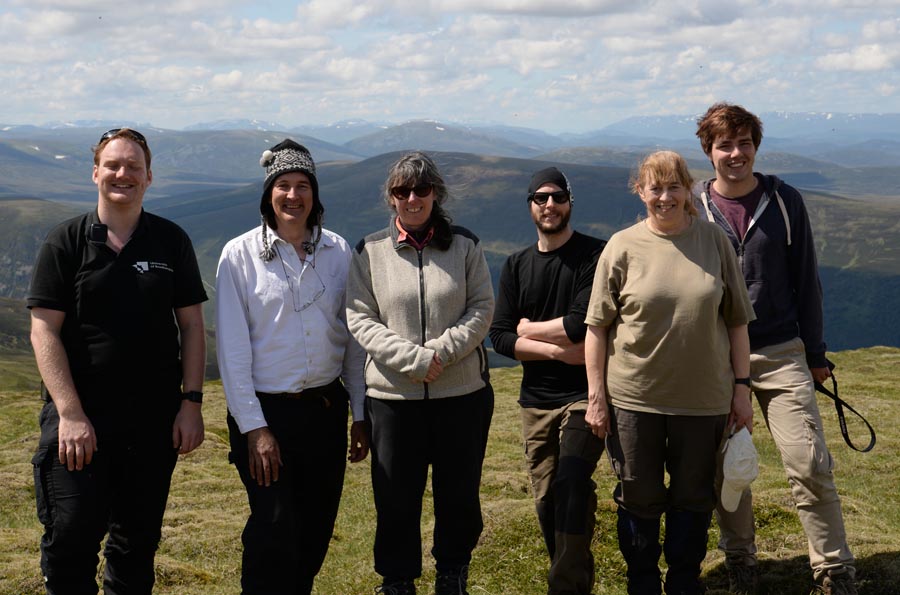
The Estate’s conservation buggy is very useful when we have a pile of awkward items to carry.

This is the 2016 node in its protective laser-cut “inner” box. You can see our new processor board with on-board radio and the optional lighter green CC1120 radio board on top of the MountainSensing v2 pcb which handles power and /I/O.












